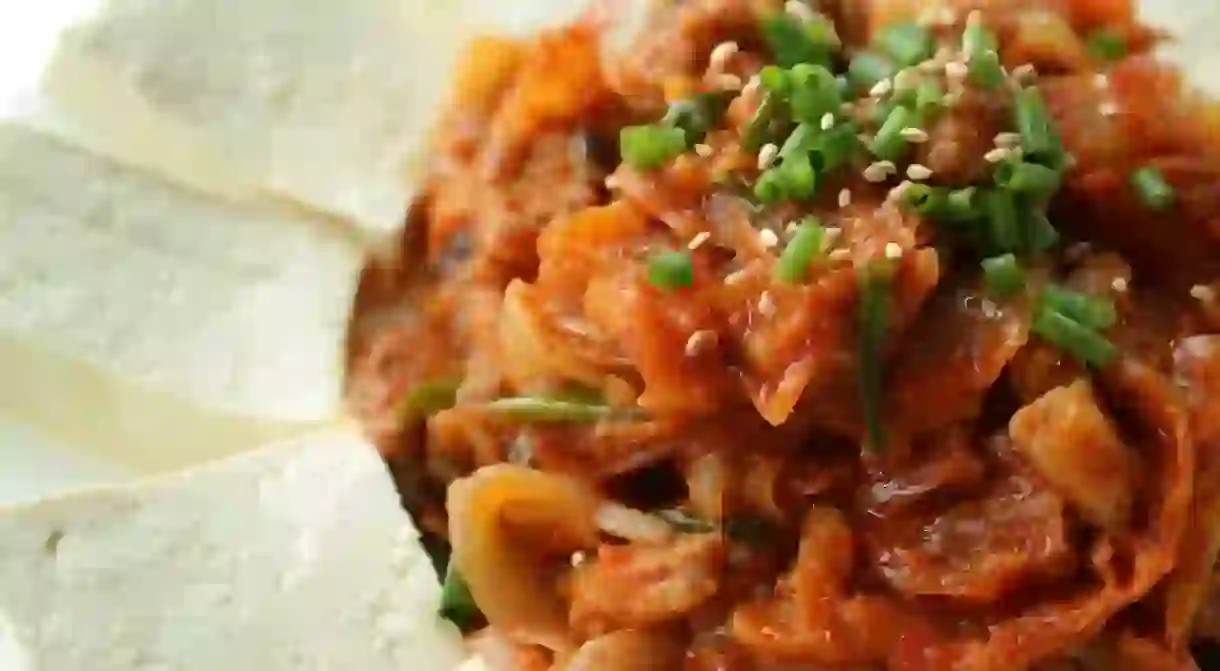A Guide to South Korea for the Kimchi Obsessed

It is said that to truly understand a country’s culture, you must first experience its food. In South Korea, this cultural journey starts with kimchi, the fiery, fermented side dish often consumed with every meal. From a kimchi museum to an academy where you can learn how to make the dish, the following are must-visit spots for every kimchi fan.
Museum Kimchikan (뮤지엄김치간)
Museum

With over 100 known varieties, kimchi is ubiquitous in every corner of South Korea. Perhaps the best place to learn about the iconic dish – and all its variations – is Museum Kimchikan in Insadong. Here, visitors can learn about kimchi, its different forms, and its ingredients. They can also get an up-close, microscopic look at the lactic acid bacteria that helps make kimchi so healthy. In addition to the permanent exhibits on display, Museum Kimchikan holds kimchi tasting sessions and cooking classes where visitors can try their hand at preparing baek (white) kimchi and traditional tongbaechu kimchi. Audio guides in English, Japanese, and Chinese are available, while a guided tour of the museum by a docent are given at designated times. Online reservations can be made through the museum’s official website.
Seoul Kimchi Academy (서울 김치 문화 체험관)
School

Perhaps no other dish is more synonymous with Korea and its culture than kimchi, and for good reason. The average Korean consumes about 22 kilograms (48 pounds) of the spicy-sour side dish per year, and it is typically served with just about every meal. A great way to learn more about kimchi is by making it, and the Seoul Kimchi Academy offers an array of classes led by professional instructors. Following the step-by-step cooking sessions, participants can taste their hand-made kimchi, as well as have it vacuum-packed so that it can be taken home and enjoyed later. If you’re feeling particularly touristy, sign up to take the classes in a hanbok (traditional Korean dress) for an extra fee.
Seoul Kimchi Festival (서울김장문화제)
Market

Celebrating kimjang, the seasonal period of kimchi-making that has been designated as a UNESCO Intangible Cultural Heritage item, the Seoul Kimchi Festival bridges age-old traditions and modern living. Held every November, the festival brings thousands together for a mass kimchi-making event. Here, visitors can learn how to make their own kimchi from a kimchi master, watch performances related to kimchi, and even purchase various kinds of kimchi from different regions of Korea.
Gwanghwamun Jip (광화문집)
Restaurant, Korean

Tucked into a closet-sized, back alley nook, Gwanghwamun Jip is a neighborhood institution made famous for its kimchi jiggae, or kimchi stew. Presented in a large pot to share, the stew is cooked at the table; as it boils, the tart, rustic kimchi seasons the broth, while fatty chunks of pork tease hungry onlookers. Pairing perfectly with the soft and flavorful gyeran mari (rolled egg omelette), the hearty dish is the perfect way to warm up during Korea’s cold winter months.
Tongin Market (통인시장)
Market

Conveniently situated to the west of Gyeongbokgung Palace is Tongin Market, one of Seoul’s most charming traditional markets. While it may on first impression appear to be a typical market, it also doubles as an important historical landmark, as it was established for Japanese residents in 1941 when Korea was under Japanese rule. In recent years, its popularity has been revitalized thanks to its Doshirak Café, where for just 5,000 won (about US$5) you can get a lunchbox to fill with whatever market snacks you’d like. Foods on offer include tteokbokki (spicy rice cakes), pajeon (savory pancakes), dumplings, and a wide variety of kimchi, among others.
Coreanos Kitchen (코레아노스키친)
Restaurant, Bar, Mexican, Korean, Fusion
Situated in the multicultural mecca of Itaewon, Coreanos Kitchen brings together Mexican and Korean flavors to deliver dishes that are as delicious as they are inventive. For starters, order the pork kimcheese fries: al pastor, cheese, and caramelized kimchi served on crispy fries topped with onions, cilantro and sour cream. Follow it up with the kimchi BKB burrito: braised pork belly, onion, cilantro, tomatoes, cheese, fresh kimchi, tomatillo salsa and kimchi fried rice wrapped and grilled in a flour tortilla. Friendly staff, a great selection of drinks, and a lively atmosphere make Coreanos a favorite place to fuel up before hitting up the neighborhood’s bars, pubs, and clubs.













